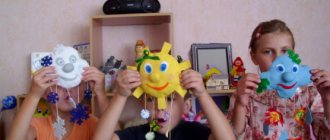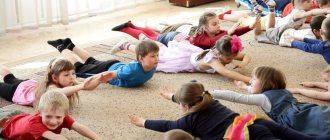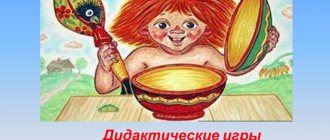What is breathing exercises?
Breathing exercises are a set of exercises aimed at developing and strengthening the body’s respiratory system. Prescribed for therapeutic and prophylactic purposes. Gymnastics is widely used as part of complex therapy in the treatment of diseases, as well as for general health improvement in children of preschool and school age.
Breathing exercises help prevent colds and bronchitis, recover from pneumonia and strengthen the child’s immunity. Developing the respiratory system increases the body's endurance during physical activity and improves brain function.
With regular exercise, lung volume increases and the respiratory muscles are strengthened. People suffering from bronchial asthma experience a reduction in the frequency of attacks.
REFERENCE! Breathing exercises saturate the child’s brain cells with oxygen - this helps him remember information better and participate more actively in the learning process.
Article:
1. “Let’s listen to our breathing”
Goal: to teach children to listen to their breathing, determine the type of breathing, its depth, frequency and, based on these signs, the state of the body.
I.p.: standing, sitting, lying down (as convenient at the moment). The muscles of the torso are relaxed.
In complete silence, children listen to their own breathing and determine:
- where the air stream enters and where it comes out;
- what part of the body moves when inhaling and exhaling (stomach, chest, shoulders or all parts - wave-like);
- what type of breathing: shallow (light) or deep;
- what is the breathing frequency: inhalation and exhalation occur frequently or calmly at a certain interval (automatic pause);
- quiet, inaudible breathing or noisy breathing.
2. “Breathe quietly, calmly and smoothly”
Goal: to teach children to relax and restore the body after physical activity and emotional excitement; regulate the breathing process, concentrate attention on it in order to control the relaxation of your body and psyche.
I.p.: standing, sitting, lying down (this depends on the previous physical activity). If you are sitting with your back straight, it is better to close your eyes.
Inhale slowly through your nose. When the chest begins to expand, stop inhaling and pause as long as you can. Then exhale smoothly through the nose. Repeat 5-10 times. The exercise is performed silently, smoothly, so that even a palm placed to the nose does not feel the stream of air when exhaling.
3. “Breathe through one nostril.”
Goal: to teach children to strengthen the muscles of the respiratory system, nasopharynx and upper respiratory tract.
I.p.: sitting, standing, the torso is straightened, but not tense.
- Close the right nostril with the index finger of the right hand. Take a quiet, long breath with your left nostril (consecutively lower, middle, upper breathing).
- As soon as the inhalation is completed, open the right nostril and close the left one with the index finger of the left hand - through the right nostril, exhale quietly for a long time, emptying the lungs as much as possible and pulling the diaphragm as high as possible so that a “pit” is formed in the stomach.
3-4. Same with the other nostrils.
Repeat 3-6 times.
Note. After this exercise, inhale and exhale through one nostril several times in a row (first with the nostril that is easier to breathe, then with the other). Repeat 6-10 breathing movements with each nostril separately. Start with calm breathing and move on to deep breathing.
4. “Balloon” (Breathe with your stomach, lower breathing).
Goal: to teach children to strengthen the muscles of the abdominal organs, ventilate the lower part of the lungs, and concentrate on lower breathing.
I.i.: lying on your back, legs freely extended, torso relaxed, eyes closed. Attention is concentrated on the movement of the navel: both palms rest on it.
Exhale calmly, drawing the stomach towards the spinal column, the navel seems to lower.
- Slow, smooth inhalation, without any effort - the stomach slowly rises up and swells like a round ball.
- Slow, smooth exhalation - the stomach slowly retracts towards the back.
Repeat 4-10 times.
5. “Balloon in the chest” (middle, costal breathing)
Goal: to teach children to strengthen the intercostal muscles, concentrate their attention on their movement, ventilating the middle sections of the lungs.
IP: lying, sitting, standing. Place your hands on the lower part of the ribs and concentrate on them.
Exhale slowly, evenly, squeezing the ribs of the chest with your hands.
- Slowly inhale through your nose, your hands feel the expansion of your chest and slowly release the clamp.
- As you exhale, the chest is again slowly pressed with both hands at the bottom of the ribs.
Repeat 6-10 times.
Note. The abdominal and shoulder muscles remain motionless. In the initial phase of training, it is necessary to help children slightly compress and unclench the lower part of the ribs of the chest as they exhale and inhale.
6. “The balloon rises up” (upper breathing)
Goal: to teach children to strengthen and stimulate the upper respiratory tract, providing ventilation to the upper parts of the lungs.
IP: lying, sitting, standing. Place one hand between your collarbones and concentrate on them and your shoulders.
Inhale and exhale with a calm and smooth rise and fall of the collarbones and shoulders.
Repeat 4-8 times.
7. “Wind” (cleansing full breath).
Goal: to teach children to strengthen the respiratory muscles of the entire respiratory system, to ventilate the lungs in all parts.
IP: sitting, standing, lying down. The torso is relaxed, exhale completely through the nose, drawing in the stomach and chest.
- Take a full breath, protruding your stomach and chest ribs.
- Hold your breath for 3-4 seconds.
- Forcefully release the air through pursed lips with several abrupt exhalations.
Repeat 3-4 times.
Note. Exercise not only perfectly cleanses (ventilates) the lungs, but also helps to warm up during hypothermia and relieves fatigue. Therefore, it is recommended to carry it out after physical activity as often as possible.
8. "Rainbow Hug Me"
Goal: same.
I.p.: standing or in motion.
- Take a full breath through your nose while spreading your arms to the sides.
- Hold your breath for 3-4 seconds.
- Stretching your lips in a smile, pronounce the sound “s”, exhaling air and drawing in your stomach and chest. Direct your arms forward again, then cross them in front of your chest, as if hugging your shoulders: one hand goes under the armpit, the other on the shoulder.
Repeat 3-4 times.
9. Repeat the exercise “Breathe quietly, calmly and smoothly” 3-5 times.
Complex No. 2
The purpose of this complex: to strengthen the nasopharynx, upper respiratory tract and lungs by tightening the tone of certain muscle groups.
All exercises of the complex are performed standing or in motion.
10. “Breathe through one nostril.”
Repeat the exercise “Breathe through one nostril” from complex No. 1, but with a lower dosage.
11. “Hedgehog”.
Turn your head right - left at the pace of movement. Simultaneously with each turn, inhale through the nose: short, noisy (like a hedgehog), with tension in the muscles of the entire nasopharynx (the nostrils move and seem to connect, the neck tenses). Exhale softly, voluntarily, through half-open lips.
Repeat 4-8 times.
12. “Lips like a tube.”
1. Exhale completely through the nose, drawing in the stomach and intercostal
muscles.
2. Form your lips into a “tube” and sharply draw in air, filling everything with it
lungs to capacity.
3. Make a swallowing movement (as if you are swallowing air).
4. Pause for 2-3 seconds, then raise your head up and
exhale air through your nose smoothly and slowly.
Repeat 4-6 times.
13. “Ears.”
Shaking your head left and right, take deep breaths. The shoulders remain motionless, but when tilting the head to the right - to the left, the ears are as close to the shoulders as possible. Make sure that your torso does not turn when you tilt your head. Inhalations are performed with tension in the muscles of the entire nasopharynx. Exhalation is voluntary.
Repeat 4-5 times.
14. “Blowing soap bubbles.”
1. When tilting your head to your chest, inhale through your nose, tensing your muscles
nasopharynx.
2. Raise your head up and calmly exhale air through your nose, like
blowing soap bubbles.
3. Without lowering your head, inhale through your nose, tensing your muscles.
nasopharynx.
4. Exhale calmly through the nose with your head bowed.
Repeat 3-5 times.
15 “Tongue with a tube.”
1. The lips are folded in a “tube”, as when pronouncing the sound “o”. Language
stick it out and also fold it into a “tube”.
2. Slowly drawing in air through the “tube” of the tongue, fill everything with it
lungs, inflating the stomach and ribs of the chest.
3. When you finish inhaling, close your mouth. Slowly lower your head so that
chin touched chest. Pause – 3-5 seconds. 4. Raise your head and calmly exhale air through your nose. Repeat 4-8 times.
16. "Pump".
1. Bring your hands together in front of your chest, clenching your fists.
2. Bend forward - down and with each spring
bending over to take gusty breaths, as sharp and noisy as
when inflating tires with a pump (5-7 springy inclinations and
breaths).
3. Exhalation is voluntary.
Repeat 3-6 times.
Note. When inhaling, strain all the muscles of the nasopharynx.
Complication. Repeat the exercise 3 times, then bend forward and backward (large pendulum), while inhaling and exhaling. When bending forward, pull your arms freely towards the floor, and when bending back, raise them to your shoulders.
With each breath, the muscles of the nasopharynx tense.
Repeat 3-5 times.
Recommendations for conducting
In kindergartens, breathing exercises are performed daily once or twice a day. The right time to do it is a morning walk and the period after the end of the “quiet hour”. At school - in physical education classes.
Basic recommendations for all age groups:
- Breathing exercises invigorate the body, so it is not advisable to do them before bed.
- Exercising on an empty stomach can be dangerous and can cause dizziness. At the same time, it is also not worth doing gymnastics immediately after eating in order to avoid digestive problems. The optimal time is an hour after eating.
- Gymnastics must take place in the fresh air. If it is not possible to go outside, the room must be well ventilated.
- There should be no dust in the room where classes are held that children will inhale.
- It is advisable that clothing be loose and not compress the chest and abdomen.
- For children aged two to three years, a complex of one to three lessons , lasting no more than 10 minutes, . Due to their age, they will not be able to practice for longer and may become distracted soon after they begin.
- To attract preschoolers to perform, gymnastics should be carried out in the form of a game. You can also invite children to smell flowers or guess what smell appeared in the air.
- The body should be relaxed during exercise, the muscles of the neck, arms and chest should not be tense.
- When inhaling and exhaling, the cheeks should not puff up (the exception is play exercises for younger children). This can be observed by placing your hands on them.
IMPORTANT! Breathing exercises have contraindications. Exercises are prohibited for persons suffering from heart disease and during acute inflammatory lung diseases and viral infections.





